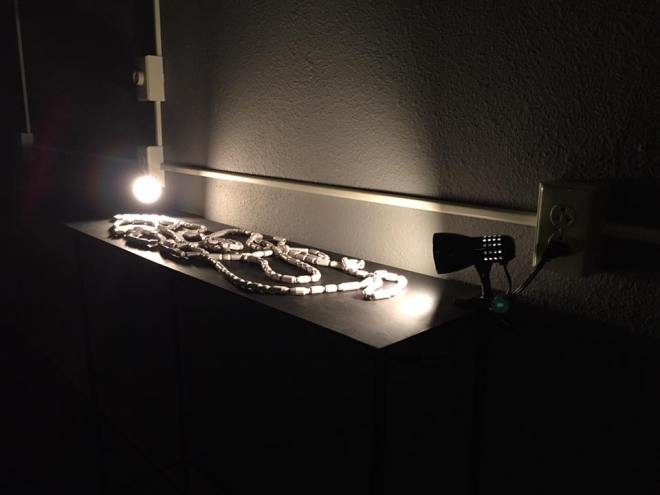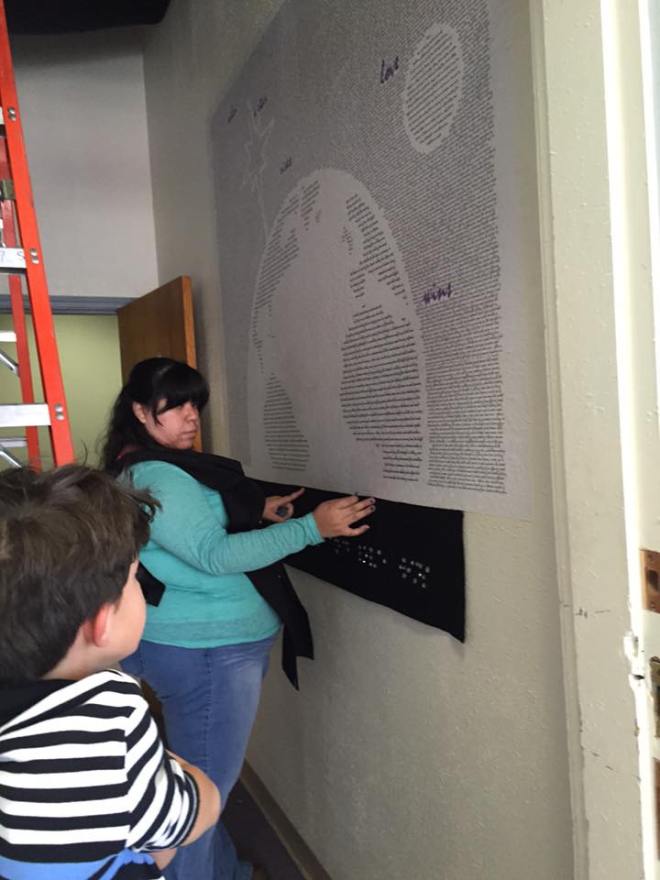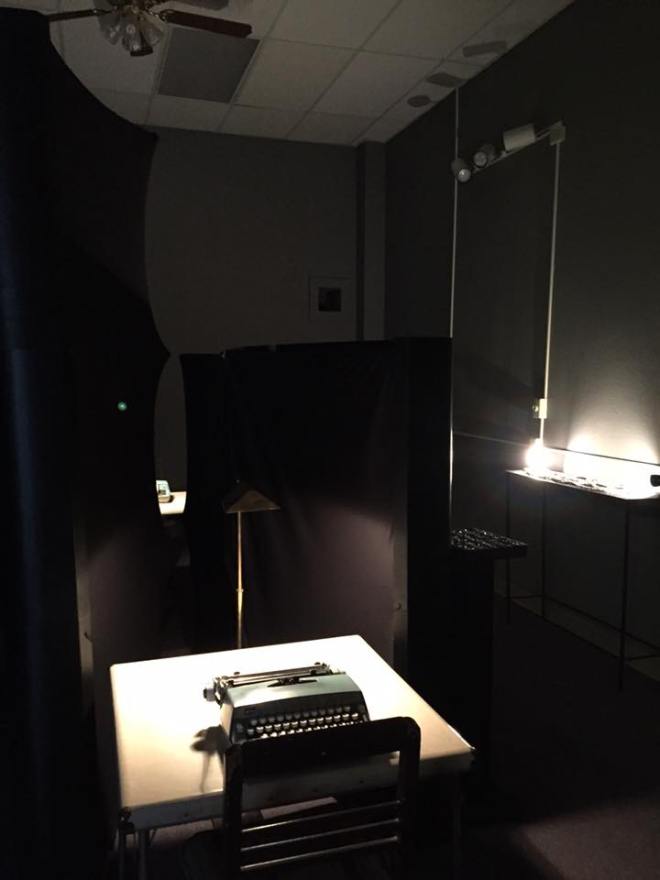The AmeriCorps Cultural Technology program is a highly beneficial program that one can participate in. Through this, you engage in multiple facets of the professional world such as art installations/exhibition design, various video and documentation work (among many other projects), and have some really enlightening discussions, etc. During the course of this AmeriCorps term, my internship involved doing more oral historian work and creating an archive of high quality video interviews that showcase the rich history of Los Alamos, New Mexico.

(Rising Star art installation, photo by Tara Trudell)
Throughout the course of this internship, I’ve been involved in a number of things. I was at the Cesar Chavez Day celebration, documenting the various activities going on, which included: a march throughout downtown Albuquerque, NM (protesting, fighting for rights, Bernie supporters, dances, etc…it was quite a remarkable sight), various speeches by important figures, a powerful poem about a fist and the power it holds, bands, and performances that were put on by some adorable children. That activity left a lasting impression on me, and I’m glad I was able to be there to witness such a spectacular event. I’ve also been working with the AmeriCorps class on setting up an accessible, multisensory art installation, where we took a poem by our classmate Tara Trudell and brought it to life through video, audio, touch, smell, interactivity… and also keeping with the spirit of the class, we included elements such as sign language, Braille, and other mediums to be able to include those with a disability. I found this semester’s AmeriCorps class to be full of new information, information that I wouldn’t have thought about otherwise if I hadn’t taken the class.

(Rising Star art installation, photo by Tara Trudell)
As for obstacles and successes, well… I’ve had a little of each, more successes then failures. At the start of the internship, one of the bigger pains was scheduling people for an interview. If I’m being honest, I would rather not talk on a phone, and because of that, when I had to make phone calls I would hurry through them as fast as possible, and it would end up sounding more or less like a telemarketing phone call. That was corrected by having our mentor make the initial phone call, and then having Chris and I make a follow up phone call to schedule the interviewee. Another disappointing aspect of the internship was that there were certain times that I didn’t feel like I was getting appropriate feedback in regards to the edited interviews. Compliments and comments are nice, but those don’t help you improve. Granted, I didn’t bring this up at all during the course of the internship because I didn’t think it was a big deal…but now that I think about it, I wish I had done so.

(Rising Star art installation, photo by Tara Trudell)
My expectations of this internship were exceeded. In part due to the fact that I tried a lot of new things this semester, and it’s good to break out of your comfort zone. I worked on my first all accessible multisensory design exhibit, documented an important event about human rights, worked on a successful video collection about a topic I hardly knew anything about, and gained some new technical skills (such as conducting an interview). I feel like I’ve built upon the oral historian knowledge that I first gained last summer through the WW2 project, and I have more of an appreciation for this kind of work. Overall, I think this AmeriCorps internship has been the best one yet, and I can’t to begin work on not only another interview collection this summer, but also phase 2 of the Rising Star art installation.
(Rising Star art installation, photo by Tara Trudell)
Here is a video of the setup for “Rising Star”.
And here is a video of the actual installation, up and running.